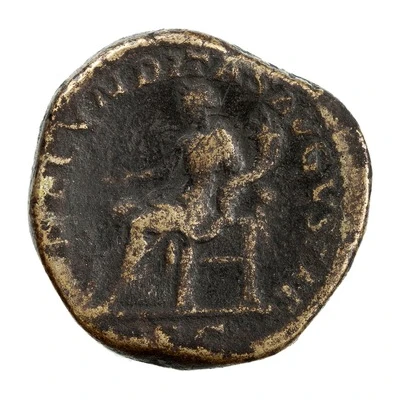


© American Numismatic Society (ANS)
Sestertius - Julia Maesa FECVNDITAS AVGVSTAE S C; Fecunditas
| Bronze | 25.7 g | 32 mm |
| Issuer | Rome › Roman Empire (27 BC - 395 AD) |
|---|---|
| Emperor | Elagabalus (Sextus Varius Avitus Basianus) (218-222) |
| Type | Standard circulation coin |
| Years | 218-222 |
| Value | Sestertius (⅛) |
| Currency | Antoninianus, Reform of Caracalla (AD 215 – 301) |
| Composition | Bronze |
| Weight | 25.7 g |
| Diameter | 32 mm |
| Shape | Round (irregular) |
| Technique | Hammered |
| Demonetized | Yes |
| Updated | 2024-10-05 |
| Numista | N#277102 |
|---|---|
| Rarity index | 100% |
Reverse
Fecunditas, draped, seated left, extenidng her right hand to a child and holding cornucopiae in left hand.
Script: Latin
Lettering: FECVNDITAS AVGVSTAE S C
Translation:
Fecunditas Augustae. Senatus Consultum.
Imperial fertility. Decree of the senate.
Comment
Mass varies: 23.51–26.95 g;Diameter varies: 31–33 mm;
Example of this type:
American Numismatic Society (ANS)
Source:
Online Coins of the Roman Empire (OCRE)
Interesting fact
The Fecunditas (Fecundity) coin, minted during the reign of Julia Maesa, was a unique issue that featured the image of a woman, personifying the fertility of the Roman Empire. This was a departure from the usual depiction of male figures on coins and was a nod to the important role that women played in Roman society, particularly in terms of childbearing and family. The coin's design was meant to promote the idea of fertility and abundance, which was a key aspect of Roman culture and society at the time.